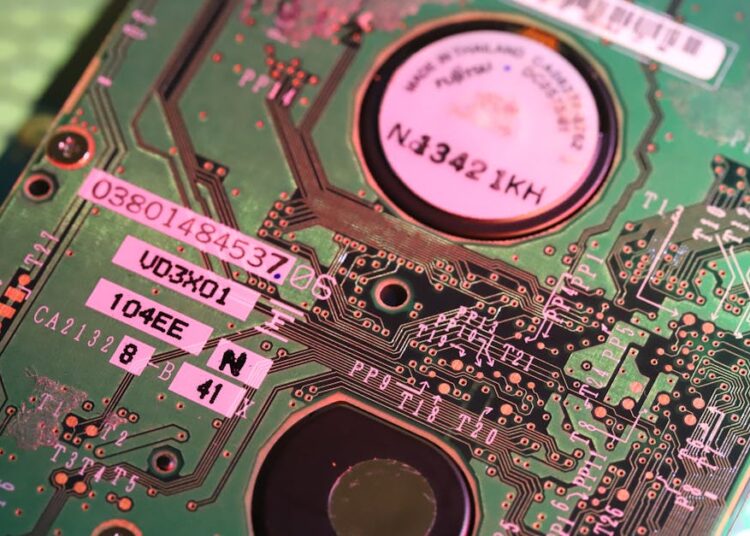Micron Technology, a powerhouse in the semiconductor industry, recently made headlines with its significant 2025 layoffs. These layoffs, while unfortunate, are part of the company’s strategic response to evolving market conditions and economic factors. In this article, we’ll explore the details behind these layoffs, their impact, and what they mean for Micron’s future as well as the memory and semiconductor market.
A Brief Look at Micron Technology
Micron Technology, founded in 1978, has consistently stood as a leader in the field of semiconductor production. Known primarily for manufacturing computer memory and data storage components, the company has held its ground amidst numerous competitors thanks to its innovation and commitment to quality. Micron’s products are integral to several high-technology solutions, driving advancements in storage and computing for industries ranging from personal computing to automotive technology. As a giant in the sector, Micron plays a crucial role in technology, influencing both consumer and enterprise solutions.
Micron Technology Layoffs 2025
Micron Technology’s 2025 layoffs were not completely unforeseen, considering its earlier workforce reductions in 2023 and 2024. Initially announcing a 10% workforce cut in December 2022, the plan expanded to a staggering 15% by the end of 2023. Approximately 7,350 employees, out of its global workforce of around 49,000, found themselves affected. The reductions were achieved through both direct layoffs and natural attrition, with nearly two-thirds of the impacted roles eliminated through layoffs. With the technological landscape constantly changing, Micron’s decision reflects market volatility and the company’s efforts to remain financially sound and competitive.
A Detailed Analysis of Micron Technology 2024 Layoffs
The year 2024 saw Micron execute significant layoffs, which can largely be accredited to an ongoing slowdown in the semiconductor market. For over a decade, the global demand for chips surged exponentially, driven by advancements in AI, machine learning, and more. However, a combination of saturated markets, geopolitical tensions, and fluctuating demand curves initiated the need for Micron’s recalibration. By cutting costs and fine-tuning operations, the company aimed to mitigate losses and streamline processes. Despite the immediate challenges, Micron’s moves are not solely measures of contraction. There are strategies in place to cultivate growth and adaptability in the long run — new manufacturing plants, for instance, in Boise and near Syracuse, New York, are manifestations of this forward-looking approach, supported by the CHIPS and Science Act.
Key Points Behind These Layoffs
Several factors contributed to Micron’s decision to implement layoffs in 2024 and 2025:
1. Market Slowdown: A slower pace in the electronics and semiconductor industry significantly impacted Micron’s revenue and margins.
2. Cost Optimization: Reducing expenditure via layoffs is a common corporate strategy during financial downturns. By streamlining operations, Micron endeavors to stabilize its business against economic headwinds.
3. Technological Overhaul: As technology evolves, companies need to shift focus and resources towards new innovations. Micron’s reallocation towards next-gen semiconductors reflects this need.
4. Corporate Strategy: Micron’s proactive planning involves shedding excess to prepare for a lean and agile 2025, paving the way for potential market upswings.
5. Economic and Industry Dynamics: Cyclical behavior in the semiconductor sector necessitates adaptable workforce strategies. Micron’s actions illustrate responsiveness to these dynamic patterns.
Are Layoffs Part of a Bigger Industry Trend?
Micron’s layoffs can be viewed as part of a larger trend impacting the semiconductor industry globally. Challenges such as supply chain disruptions, shifting consumer demand, and geopolitical factors have caused ripples across the tech sector. Many firms, like Intel, AMD, and Qualcomm, have encountered similar challenges, leading them to either scale back operations or pivotal workforce reductions. As industries grapple with these realities, layoffs emerge as a tool for recalibrating financial strategies and adapting to the uncertainties of a fluctuating world economy. There is a collective anticipation that as the demand for semiconductors bounces back, companies like Micron will be primed for growth, equipped with refined strategies and robust infrastructure.
Micron Technology Business Model
Micron’s business model intricately intertwines innovation with a robust supply chain. The company’s foundation rests on delivering cutting-edge memory solutions spanning DRAM, NAND, and NOR memory realms. By leveraging economies of scale and investing heavily in R&D, Micron continues to ensure high efficiency and cost-effectiveness in its operations. Strategic partnerships and collaborations also play a critical role, seamlessly blending technology development with market demands. Despite recent workforce contractions, Micron maintains a forward-thinking stance, pushing boundaries in product development and maintaining competitive superiority amid rapid technological shifts.
Financial Performance Of Micron Technology
The layoffs by Micron in 2025 cannot be singularly attributed to financial distress but should be viewed in context with their broader financial health strategies. Despite market challenges, third-quarter 2024 reports indicated stable revenue streams albeit marred by dips in profit margins. Executive decisions like pay reductions and pauses in bonuses were short-term responses to protect Micron’s financial integrity. Simultaneously, ongoing investments in manufacturing and technology highlight long-term optimistic projections. Such strategic balance between immediate austerity measures and robust future investments underscores Micron’s commitment to sustainable growth and market leadership.
Conclusion
The 2025 layoffs at Micron Technology reflect a confluence of market forces, strategic realignments, and evolving technological demands. While immediate impacts pose challenges for both the company and its workforce, these difficult decisions are also indicative of Micron’s resilience and adaptability. By continuing to invest in essential technologies and forging ahead with new projects, such as the manufacturing plants in the U.S., Micron demonstrates its commitment to innovation and future opportunities. As we look forward, Business Noted will continue to track the journey of Micron Technology and its efforts in leading within the dynamic realm of semiconductors.












